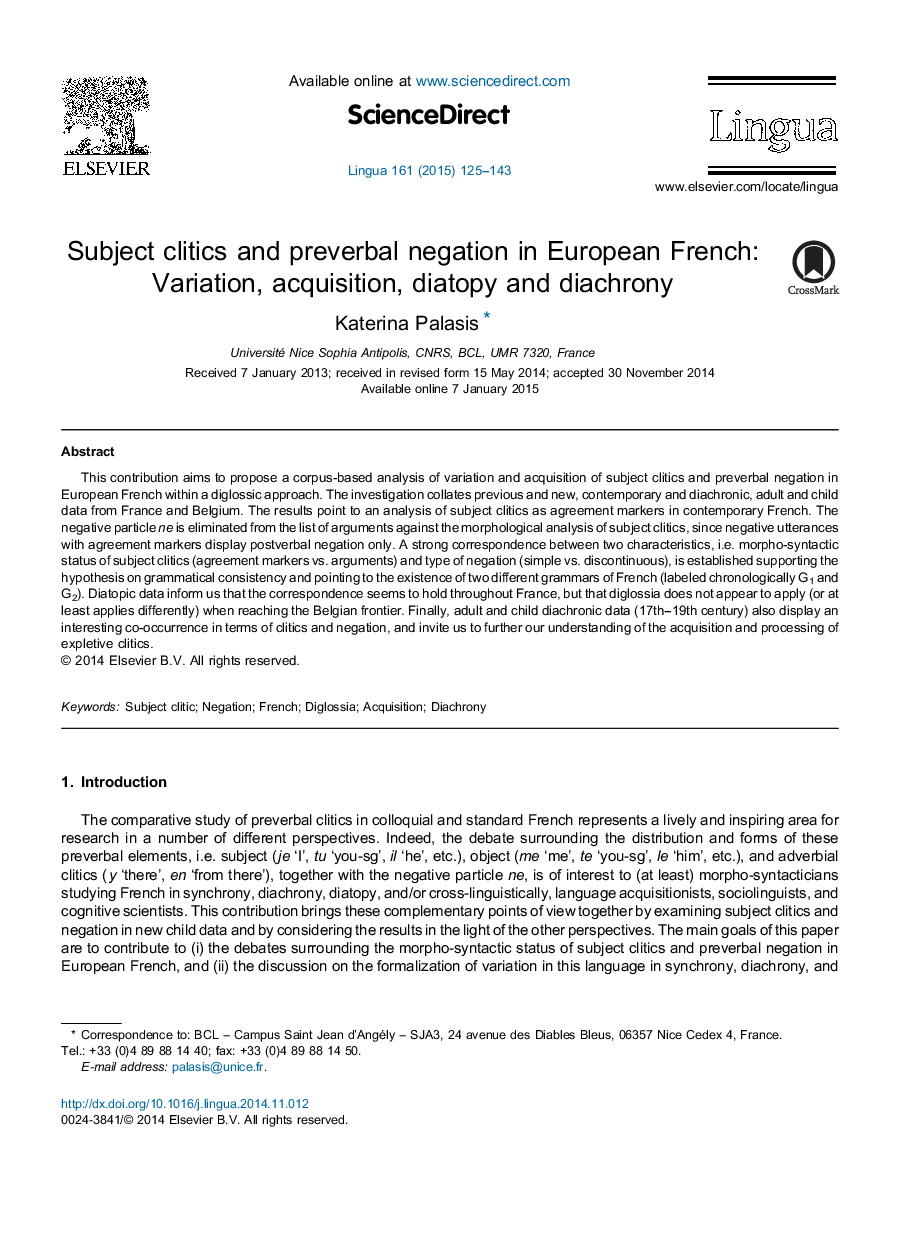| کد مقاله | کد نشریه | سال انتشار | مقاله انگلیسی | نسخه تمام متن |
|---|---|---|---|---|
| 935368 | 1475049 | 2015 | 19 صفحه PDF | دانلود رایگان |
• Corpus-based analysis of subject clitics and negation in European French.
• New child data for Metropolitan French: 12,969 utterances by 19 children.
• The study of negation sheds light on the status of subject clitics.
• Speakers of Metropolitan French are diglossic (G1 and G2).
• G1 displays agreement markers and simple negation.
This contribution aims to propose a corpus-based analysis of variation and acquisition of subject clitics and preverbal negation in European French within a diglossic approach. The investigation collates previous and new, contemporary and diachronic, adult and child data from France and Belgium. The results point to an analysis of subject clitics as agreement markers in contemporary French. The negative particle ne is eliminated from the list of arguments against the morphological analysis of subject clitics, since negative utterances with agreement markers display postverbal negation only. A strong correspondence between two characteristics, i.e. morpho-syntactic status of subject clitics (agreement markers vs. arguments) and type of negation (simple vs. discontinuous), is established supporting the hypothesis on grammatical consistency and pointing to the existence of two different grammars of French (labeled chronologically G1 and G2). Diatopic data inform us that the correspondence seems to hold throughout France, but that diglossia does not appear to apply (or at least applies differently) when reaching the Belgian frontier. Finally, adult and child diachronic data (17th–19th century) also display an interesting co-occurrence in terms of clitics and negation, and invite us to further our understanding of the acquisition and processing of expletive clitics.
Journal: Lingua - Volume 161, July 2015, Pages 125–143
